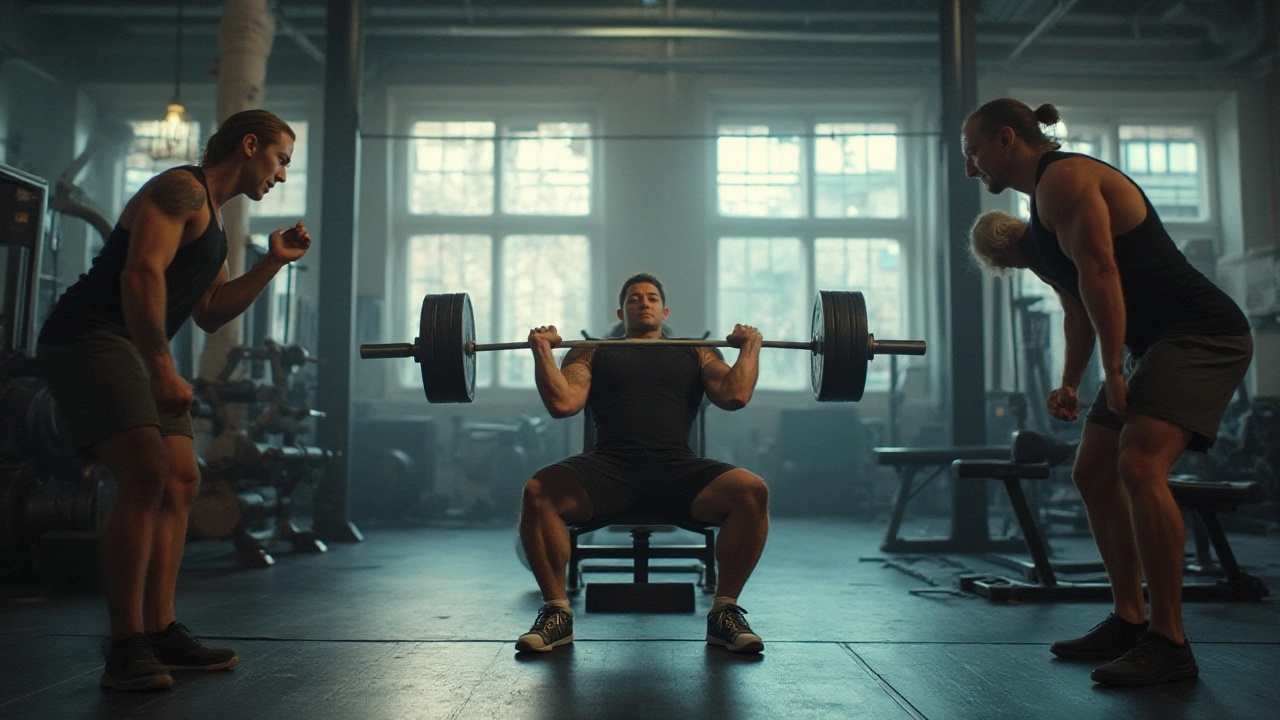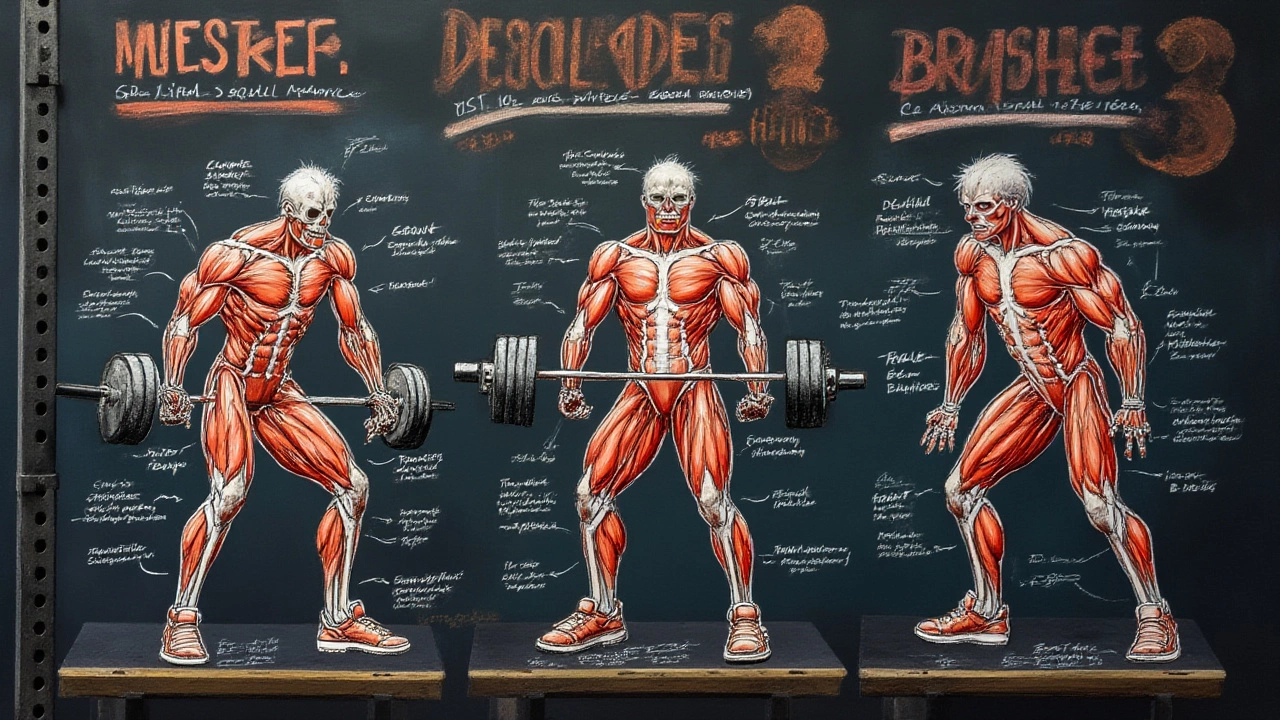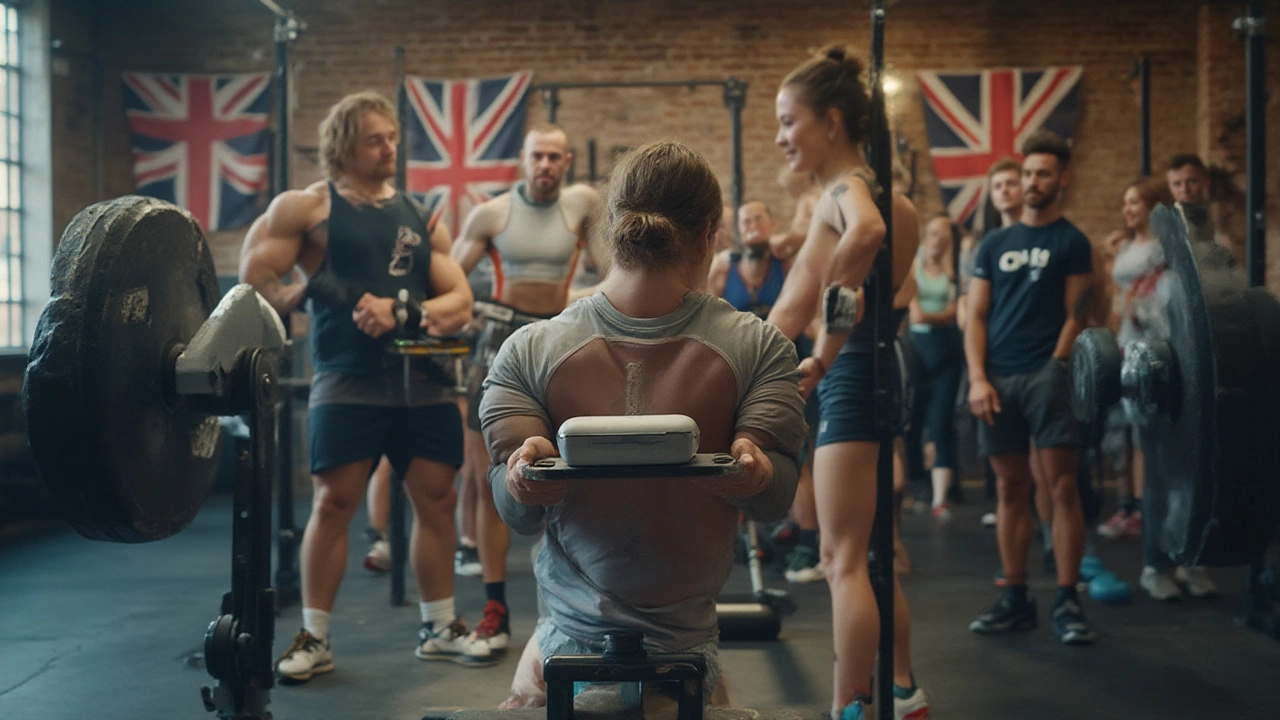Big 3 Gym Workouts: Master Squat, Bench, Deadlift for Muscle Gains
 Jul, 24 2025
Jul, 24 2025
Ask anyone who’s spent time under a barbell what really transforms your body, and they’ll answer with three words: squat, bench, deadlift. These aren’t just exercises—they’re the backbone of every powerful training program. Why? Because they recruit muscles from head to toe, torch calories, and build a level of functional strength that isolation machines just can’t deliver. Forget fancy gadgets or one-off Instagram trends. If you want to be stronger and look better—without wasting time—the big 3 gym workout is it.
Why the Big 3 Rule the Gym
Some moves just work better than others, and nobody debates that the squat, bench press, and deadlift sit at the top of the food chain. Sure, curls feel good, but they won’t toughen up your core, stabilize your joints, or jack up your metabolism quite like these. Here’s why they’re so essential:
- Total-Muscle Activation: Each lift works dozens of muscles at once. For squats, it’s not just your legs—they fire up your glutes, abs, lower back, and even calves. The deadlift, especially, hits the posterior chain: hamstrings, glutes, lower back, traps, and even forearms. Bench press? Pec, shoulders, triceps—and don’t sleep on the back muscles keeping things stable.
- Functional Strength:
These lifts translate to real-life power. Need to pick up heavy groceries? Deadlift. Haul a suitcase up stairs? Squat. Push something overhead? Bench press techniques help. That’s why powerlifters, athletes, and military alike keep them in weekly rotation.
- Time-Efficient:
Big compound movements let you work hard and get out of the gym faster. No need for endless biceps curls and leg extensions. Three moves, a handful of focused sets, and you’re stimulating almost your entire body.
- Hormonal Benefits:
The big 3 lifts are known for stirring up anabolic hormones. One peer-reviewed study from the Journal of Strength and Conditioning Research (2013) confirmed that men saw higher testosterone and growth hormone spikes after heavy squats versus isolation moves. That’s your body’s own muscle-building fuel—no supplements needed.
- Built-In Progress Tracking:
Because these lifts use barbells and standard weight plates, it’s easy to keep score. Add five pounds, do one more rep, or fix your form. You know if you’re getting stronger or stuck just spinning your wheels.
- Injury Resilience:
With good technique, the big 3 improve core strength, stabilize connective tissues, and teach your body how to brace under load—a skill that prevents injury in sports, active jobs, and daily life.
It’s no wonder that every serious trainer from Arnold to strongman competitors has a love affair with these moves. Not just for “meatheads” either—track runners, tennis players, even older adults see major payoff from a smart program focused on the big 3.

Breaking Down the Big 3: Technique, Mistakes, Secrets
Let’s get real: two people can “do a bench press” and get wildly different results. Details matter. So here’s what you need to know for each lift if you want to avoid the rookie mistakes, reap the rewards, and actually build muscle—not just pile up injuries.
1. The Squat
- The squat is often called the king of lifts—and with good reason. It trains your lower body, obviously, but it also challenges your core, upper back stability, and balance. Your brain and nervous system work overtime just to keep you upright with weights on your shoulders.
- The science: A 2017 review in Sports Medicine reported squats work at least 200 muscles plus stabilizers, and specifically help with bone density—critical for everyone, not just athletes.
- Form Tip: Imagine screwing your feet into the floor for stability. Push hips back, keep chest tall, knees tracking toes, and go deep—hips below parallel is best for full muscle activation, unless mobility says otherwise.
- Mistakes to Avoid: Rounding your back, knees caving in, letting heels lift. If your lower back hurts, check your depth and video yourself. Set up in a rack for safety—no ego lifts.
- Pro Tip: Even if you can’t squat with a barbell, goblet squats (holding a dumbbell up at your chest) are great for learning form.
2. The Bench Press
- Nothing says “gym day” like benching, and for good reason. Pecs, triceps, shoulders, and even your core all get a challenge. It’s also a movement you can actually get better at—test your numbers, beat them, repeat.
- The science: Pro bodybuilders still swear by flat barbell bench as the best tool for chest growth. But you don’t need to chase records—studies confirm that both moderate and heavy loads stimulate muscle if you push near failure.
- Form Tip: Plant your feet, arch your upper back slightly (not your butt!), squeeze your shoulder blades, and lower the bar in control to somewhere around nipple level. Think “pull the bar down, then push the world away.”
- Mistakes to Avoid: Bouncing the bar, letting shoulders roll forward, elbows flaring wide out. Bad form is a one-way ticket to sore joints and wasted effort.
- Pro Tip: If you stall out, try adding paused reps—hold the bar on your chest for a full second before pressing up. It’s brutal, but it works wonders.
3. The Deadlift
- If squats are the king, deadlifts are the powerhouse. They build your back like nothing else (seriously, just ask any Olympic lifter). Plus, deadlifts are hands-down the best way to train picking stuff up safely—on or off the field.
- The science: The National Strength and Conditioning Association lists deadlifts as the single most effective lift for total posterior chain strength. That means your glutes, hamstrings, lower back, even grip.
- Form Tip: Stand with the bar over your mid-foot, grip just outside your legs, sit your hips back, squeeze your lats, and drive the floor away with your legs. Chest up, back tight, no jerking. The bar should scrape up your shins (wear socks).
- Mistakes to Avoid: Rounding your back, yanking with your arms, letting hips pop up first. Treat every rep like it’s heavy or risk injury.
- Pro Tip: Don’t go to failure, especially with deadlifts. Your form slips first—quit while you’re ahead so your lower back thanks you tomorrow.

How to Program the Big 3 for Fast Results
Okay, now you know the moves. But how do you use them together for best results? Here’s the secret sauce: frequency, smart progression, and listening to your body. You don’t need to train all three lifts every day—or even in every workout. What you do need is consistency and recovery.
This is where most beginners drop the ball. Lifting heavy without recovery time is a recipe for burnout. But go too easy, and you don’t get stronger. Here’s a proven template, based on actual programming from champion coaches:
- Train each lift 1–2 times per week. Some like to split them up: squat day, bench day, deadlift day. Others do full-body sessions 2–3 times per week, each with one main lift followed by lighter accessories.
- Choose weights that challenge you but let you complete every rep with solid form. As a rule, stop a rep or two before total muscle failure to reduce injury risk and keep form crisp.
- Progress is king. Your body adapts fast, so keep notes. Add a little weight, another rep, or improve the way you move the weight each week. Even adding 2.5 lb plates counts—progress is progress.
- Volume: Most folks see results with 3–5 sets of 3–8 reps per lift. Heavy days (3–5 reps, more sets), and lighter days (6–8 reps, fewer sets) work best when alternated.
- Warm up with lighter weights for each lift—don’t just walk in cold and jump to your work set. Your joints, nervous system, and muscles need a ramp-up to avoid tweaks.
- Include “accessory” lifts that support the big 3: rows, pull-ups, lunges, dips, planks, etc. These help fix weak points and balance your muscle growth, reducing risk of long-term injuries.
- Rest days matter. Heavy barbell work taxes your muscles and your nervous system—skip a day when you need to.
Curious how strong most people get with this style of training? Here’s a rough breakdown based on data sweeping across thousands of male lifters worldwide. These are one-rep max (1RM) averages for lifters training at least six months:
| Lift | Beginner (1RM) | Intermediate (1RM) | Advanced (1RM) |
|---|---|---|---|
| Squat | 185 lb / 84 kg | 275 lb / 125 kg | 365+ lb / 165+ kg |
| Bench Press | 135 lb / 61 kg | 200 lb / 91 kg | 275+ lb / 125+ kg |
| Deadlift | 225 lb / 102 kg | 315 lb / 143 kg | 405+ lb / 184+ kg |
Women’s numbers will usually be 50–70% of these, but don’t let that fool you—pound for pound, women make just as impressive progress. More important than chasing numbers? Do the lifts, get better week by week, and aim for strong, not just “big.”
If you want to avoid plateaus, cycle your big 3. Run three weeks heavy (high weight, low reps), then take a light week (less weight, higher reps). Deloading every fourth week works wonders and keeps you injury free.
Last tip? Record your lifts, even if just on your phone. You’ll spot form errors and see your progress. Plus, nothing motivates like looking back and realizing you just doubled your deadlift from last year.
Think of the big 3 gym workout as a passport—your entry ticket to strength, power, and a better-looking body. No fancy trends required. Just you, a barbell, and a little bit of sweat equity.